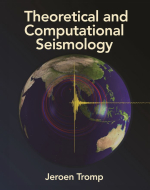Добрый день, Коллеги. Важное сообщение, просьба принять участие. Музей Ферсмана ищет помощь для реставрационных работ в помещении. Подробности по ссылке
Theoretical and computational seismology / Теоретическая и вычислительная сейсмология
This book presents over twenty-five years of research dedicated to the application of spectralelement and adjoint-state methods in seismology. If someone had told me, upon completing my PhD in 1992, that we would be able to simulate global seismic wave propagation in fully three-dimensional Earth models within ten years, I would have been skeptical. If that same person had then claimed that we would be performing 3D global waveform inversions within another ten or fifteen years, I would have dismissed the idea as absurd. However, these advancements have indeed taken place in seismology over the past few decades. My career as a seismologist began with a focus on theoretical aspects of seismology, particularly the propagation of surface waves in laterally varying Earth models and the splitting of Earth’s free oscillations. Together with my PhD advisor, the late F. A. (“Tony”) Dahlen, I wrote a book on this topic called Theoretical Global Seismology (Dahlen and Tromp, 1998). However, as we were finishing the book, I became increasingly interested in the idea of numerically simulating seismic wave propagation instead of relying on asymptotic methods. Although I had some success with a pseudospectral technique to describe continental-scale seismic wave propagation, I ultimately found that none of the numerical methods available at the time could handle the complexities required to describe global seismic wave propagation. In my view, these methods needed to produce the exact same seismograms for spherically symmetric models, such as the Preliminary Reference Earth Model (PREM) (Dziewoński & Anderson, 1981), as those calculated using the powerful, broadband normal-mode summation method. <...>




